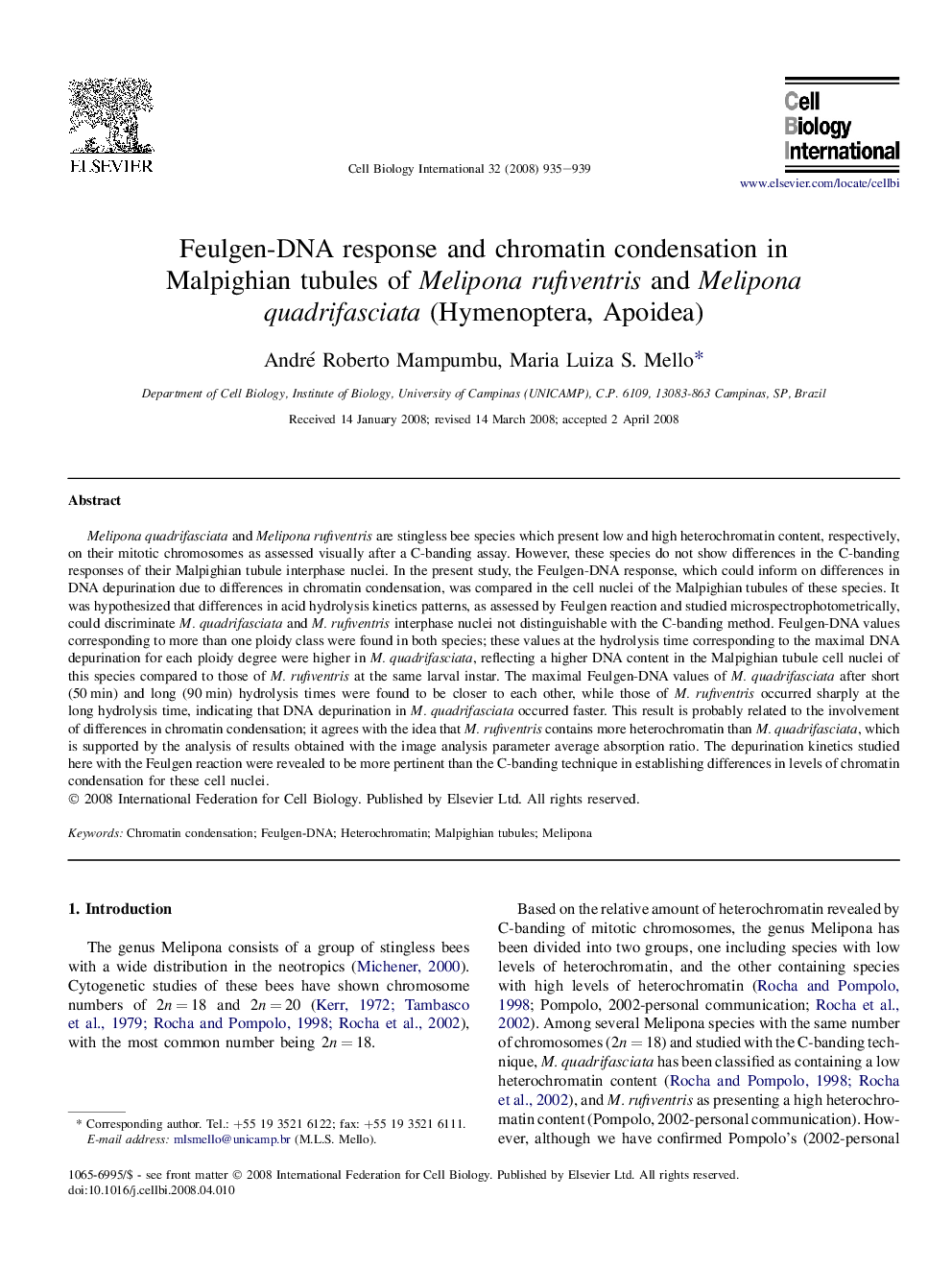| Article ID | Journal | Published Year | Pages | File Type |
|---|---|---|---|---|
| 2067308 | Cell Biology International | 2008 | 5 Pages |
Abstract
Melipona quadrifasciata and Melipona rufiventris are stingless bee species which present low and high heterochromatin content, respectively, on their mitotic chromosomes as assessed visually after a C-banding assay. However, these species do not show differences in the C-banding responses of their Malpighian tubule interphase nuclei. In the present study, the Feulgen-DNA response, which could inform on differences in DNA depurination due to differences in chromatin condensation, was compared in the cell nuclei of the Malpighian tubules of these species. It was hypothesized that differences in acid hydrolysis kinetics patterns, as assessed by Feulgen reaction and studied microspectrophotometrically, could discriminate M. quadrifasciata and M. rufiventris interphase nuclei not distinguishable with the C-banding method. Feulgen-DNA values corresponding to more than one ploidy class were found in both species; these values at the hydrolysis time corresponding to the maximal DNA depurination for each ploidy degree were higher in M. quadrifasciata, reflecting a higher DNA content in the Malpighian tubule cell nuclei of this species compared to those of M. rufiventris at the same larval instar. The maximal Feulgen-DNA values of M. quadrifasciata after short (50Â min) and long (90Â min) hydrolysis times were found to be closer to each other, while those of M. rufiventris occurred sharply at the long hydrolysis time, indicating that DNA depurination in M. quadrifasciata occurred faster. This result is probably related to the involvement of differences in chromatin condensation; it agrees with the idea that M. rufiventris contains more heterochromatin than M. quadrifasciata, which is supported by the analysis of results obtained with the image analysis parameter average absorption ratio. The depurination kinetics studied here with the Feulgen reaction were revealed to be more pertinent than the C-banding technique in establishing differences in levels of chromatin condensation for these cell nuclei.
Related Topics
Life Sciences
Biochemistry, Genetics and Molecular Biology
Biophysics
Authors
André Roberto Mampumbu, Maria Luiza S. Mello,
